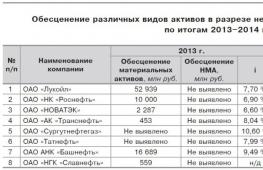Eco style in the interior - the main rules and details. Environmentally friendly materials
Spending most of his life in the technogenic atmosphere of megalopolises, a person seeks at least at home to create a safe living environment for himself. This is largely determined by the materials that are used to decorate the home. There is an opinion that in order to create a truly healthy atmosphere in a city apartment, finishing materials of exclusively natural origin should be used. Is it really?
First of all, it should be noted that modern synthetic materials produced in compliance with the appropriate technology (as evidenced by the presence of a hygienic certificate) are not at all hazardous to health. Moreover, they tend to outperform many natural materials in terms of environmental performance.
On the contrary, natural materials can sometimes behave quite “inadequately”. So, any wood is subject to natural decomposition (decay), it can become a favorable environment for the growth of fungus and mold, which can cause serious damage to human health. Of course, modern technologies make it possible to "preserve" any natural material, impregnating it, for example, with special chemical compounds or covering it with a protective layer of varnish.
However, such a product has nothing in common with the original one, except for a characteristic pattern. It should also be noted that the environmental friendliness of the materials used for housing decoration is not limited to their own chemical neutrality, but also implies resistance to external influences. In particular, the surfaces of living quarters should not collect dust and dirt, contribute to its accumulation in the house.
Tile - it is also a natural coating, it does not emit any harmful substances, but it is worth paying attention to the glue with which it is attached to the walls and floor. The same can be said, for example, about the environmental friendliness of glazed tiles, which have been and remain the optimal material for wall and floor cladding in rooms with high humidity (kitchens and bathrooms).
Its surface is water-repellent, which prevents the formation of mold and mildew, and the variety of colors, patterns and textures of tiles existing today is able to embody the most sophisticated fantasy.
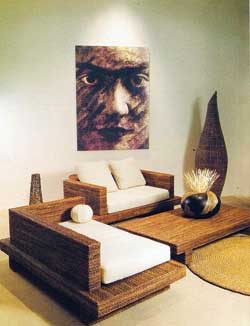 Natural fibers.
Many fibers are used to make woven floor coverings (mats) and softer upholstery fabrics, as well as paper backed wallpaper. Some paint better than others. Preference is usually given to soft and natural shades. Bamboo. Not only planks, planks and panels are made from it, but also mats, mats and even extremely soft fabrics.
Natural fibers.
Many fibers are used to make woven floor coverings (mats) and softer upholstery fabrics, as well as paper backed wallpaper. Some paint better than others. Preference is usually given to soft and natural shades. Bamboo. Not only planks, planks and panels are made from it, but also mats, mats and even extremely soft fabrics.
Algae is one of the cheapest natural fibers. China is the main supplier of raw materials. Mats and floor coverings made of algae are smooth, resistant to wear and moisture (the latter prevents staining). They are quite slippery and should not be used on stairs.
Jute has long been used to make rope and burlap, and as a natural base for carpets and linoleum. Woven jute flooring is softer than coconut or sisal and is therefore only suitable for areas where there is little traffic, such as bedrooms.
Here, the texture of jute products will be an additional advantage - it is pleasant to walk on them barefoot. Coconut fiber (coir) is obtained from the nuts of the coconut tree. Coir is used to make durable and resilient floor coverings - carpets, rugs and door mats. Coconut fiber is extremely durable, but it is prickly and difficult to dye.
Natural fiber flooring does not cause allergic reactions. They can replace carpets or be used as rugs, rugs, runners, mats, and mats.
The pattern depends on the way the fibers are woven (there are two main varieties - boucle and herringbone). Natural fiber coatings must be handled by a professional and require a suitable underlay. Choose substrates from natural materials or recycled synthetic waste.
Bung. The material for the production of cork coverings is the bark of cork, which consists of tiny cells filled with air. In addition to air, each cell contains fatty acids and other substances, which provide a number of advantages of cork coverings. Together, they make cork a unique material.
Cork coverings are environmentally friendly and hypoallergenic. They are easy to care for as they do not attract dust and oil stains or dirt can be easily removed with a damp sponge. Another advantage of cork flooring is that it has a positive effect on posture, as, thanks to its elasticity, it makes the steps springy, thereby reducing the pressure on the spine.
Linoleum. There are two types of linoleum: natural and synthetic. Frederick Walton is considered the inventor of natural linoleum, who received a patent in the UK in 1863 for an improved technology for the production of oxidized linseed oil (linoxin) and floor coverings based on it. He also belongs to the authorship of the name "linoleum".
Linseed oil is the main raw material in the production of natural linoleum, used as a binder. Natural linoleum has natural bactericidal properties and meets the requirements for ease of disinfection, cleaning, and maintenance. Bacteriostaticity (the ability to prevent the growth of bacteria) is carried out due to the linseed oil contained in linoleum.
Flaxseed oil itself is a powerful therapeutic and prophylactic agent. In our country, it is customary to call linoleum floor coverings made of PVC, which cannot be called environmentally friendly.
Decorative plaster.
Unlike paints and wallpapers decorative plaster does not peel off, practically does not change its color during operation, which for some species reaches 10-15 years, it can be washed, it is environmentally friendly, odorless, fire resistant. The plaster is based on fine particles (powder) of natural minerals (marble, lime, gypsum) and a binder (most often on a polymer or acrylic base).
After applying a thin layer of material to the surface to be treated, complex physicochemical processes take place in it, as a result of which a strong film is formed that provides high performance characteristics.
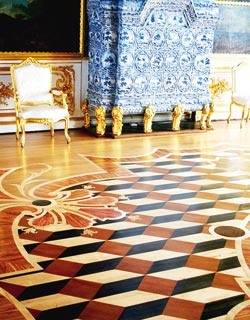 Parquet.
By itself, this material is environmentally friendly, but it is better not to use cheap synthetic varnishes, as they emit substances hazardous to humans (xylene, toluene), which can cause skin irritation and even disturbances nervous system... Better to use a water-based varnish or oil with hard wax. The same applies to parquet board glue. You should not use bituminous mastics and similar compounds.
Parquet.
By itself, this material is environmentally friendly, but it is better not to use cheap synthetic varnishes, as they emit substances hazardous to humans (xylene, toluene), which can cause skin irritation and even disturbances nervous system... Better to use a water-based varnish or oil with hard wax. The same applies to parquet board glue. You should not use bituminous mastics and similar compounds.
Laminate. Sustainability different types laminate flooring is different. All laminates are based on formaldehyde, but everywhere in different quantities, and it is very difficult to find out which ones. But any kind of laminate must have a hygienic certificate, which indicates whether it meets the requirements of the European Commission.
For example, if the certificate contains the E-1 icon, then the laminate releases formaldehyde within acceptable limits and is suitable for any premises; E-2 - suitable for bathrooms, hallways, bedrooms; E3 - only for industrial premises (in general, this classification is used by almost all finishing materials).
Carpet. A fairly environmentally friendly coating that can be harmful to allergy sufferers, as micro mites can settle in its fibers. Also, the carpet absorbs odors very well.
Paints. Water-based paints are considered the safest. The most affordable and simple finishing method is the use of water-based paint.
A natural stone.
If you want to use natural stone or porcelain stoneware in the manufacture of your floor, it will be useful to conduct a radiological study of the material in order to avoid an increased content of radon. Stone, most often granite, as well as brick and concrete, when sand from dysfunctional quarries gets into them, can serve as a source of radiation.
In order to avoid radioactivity, an examination of the materials should be carried out. Marble and limestone are the most resistant to radiation and have no background. Incorrect wiring, power cables or electrical heaters can generate very strong electromagnetic pollution. In this case, the electromagnetic field can exceed the standards by several times.
The “warm floor”, which is popular today, can also seriously affect the increase in this level, especially if this engineering solution is made in the form of a single heating element. It is impossible to screen it in some way, and the average level of the electromagnetic field in this case leads to an excess of all norms by about ten times.
Built on a bifilar system, "warm floors" reduce the background by half, but it is still not recommended to use them in such rooms of an apartment as bedrooms or children's rooms, since long-term exposure to electromagnetic fields on the human body can cause headache, frequent fatigue and even more serious consequences in the form of dysfunction of the genitourinary system, the development of human oncological diseases. 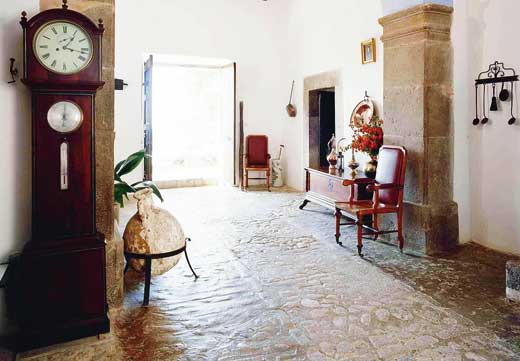 Putties. When repairing walls, you should not rush and make things easier for yourself by purchasing and using super-elastic and quick-drying putties. It is they that, after drying, become the source of phenol release. In no case should you also use dry mixes intended for facades when decorating walls inside an apartment.
Putties. When repairing walls, you should not rush and make things easier for yourself by purchasing and using super-elastic and quick-drying putties. It is they that, after drying, become the source of phenol release. In no case should you also use dry mixes intended for facades when decorating walls inside an apartment.
Wallpaper. It is best to buy wallpaper paper, and use glues based on starch or casein. Non-woven or vinyl wallpaper is synthetic and does not guarantee environmental friendliness in the apartment. In the West, where the requirements for environmental safety significantly higher than in Russia, most modern medical institutions are covered with fiberglass.
As a basis for fiberglass, special glass is used, consisting of natural components such as quartz sand, dolomite, lime and soda, which, under the influence of very high temperatures, is processed into so-called fiberglass, from which yarn is made and wallpaper panels are woven. This guarantees not only ecological cleanliness, but also avoids the formation of a breeding ground for various kinds of microorganisms in the wall covering.
The natural minerals used in the glass wall paper are, among other things, resistant to scratches, chemical attack, wall treatment and disinfection. They are almost impossible to tear and very easy to clean.
by the way
There are a few simple rules to keep in mind when gluing bamboo wallpaper. First, do not use water-based or water-soluble glue. The best solution would be to use "liquid nails".
The surface to be glued must not be covered with plaster or peeling paint. An important condition for sticking bamboo wallpaper is that after applying "liquid nails" you need to let them dry a little and not press the wallpaper too tightly against the wall. The glue should remain a plastic layer under the wallpaper.
The wallpaper should be firmly pressed against the wall only after the glue has partially dried - after 5-10 minutes. For cutting natural wallpaper across, an ordinary knife is suitable, and when cutting along, you can use metal scissors. Bamboo wallpapers tolerate stains, wood paints, various varnishes well.
Iron. Environmentally friendly material - aluminum. It does not emit any harmful chemical elements, unlike other materials. It works well as a base for false ceilings. However, it is worth considering the fact that the suspended ceiling is a "dust collector", and this leads to the fact that the air quality in the apartment deteriorates. You can install stretch ceilings in an apartment, but you should know that at least three months after their installation, most of them release phenol. 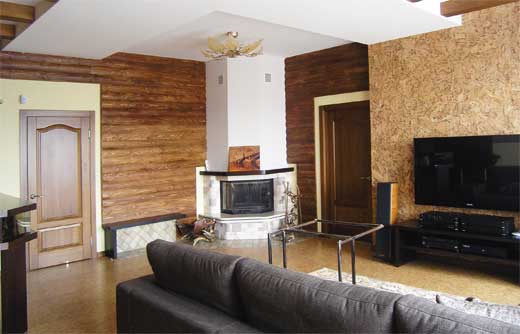
Someone may call the use of natural materials in the interior an ultra-fashionable trend, someone, perhaps, a return to the Soviet past, and perhaps to the distant past - to the origins of civilization. In any case, feeling the breath of nature around you and not worrying about your health is what you should use for environmentally friendly building materials.
For floor
Choosing environmentally friendly flooring materials shouldn't be a problem. Their choice is wide enough, and prices are very diverse from inexpensive solid wood to parquet boards and exquisite parquet of precious wood species.
They have a noble appearance, very pleasant to the touch (walking barefoot on a tree is a pleasure). Usually, they are afraid to lay parquet because of the complexity of maintenance. Indeed, you need to take care of him correctly. However, with decent care, it can serve for a very long time - not only to you, but also to your children and even grandchildren.
If you prefer a “soft” floor, you can use either a natural wool carpet.
And why not think about such simple and natural mats. They are woven from reed, sesal, flax, coconut fiber. They not only protect the floor, but also improve the microclimate in the room. And how harmoniously they will fit into the eco-interior!
For walls
For wall decoration, there are many materials that meet the "natural" principle. These are primarily wallpaper made of paper, safe water-based paints, environmentally friendly plasters.
Glass wallpapers are worthy of special attention. The name and composition are a little scary (soda, quartz sand and lime), but the guaranteed absence of harmful chemicals. elements and, moreover, high wear resistance allows them to be used in any room in the apartment.
Allergy sufferers should prefer liquid wallpaper. They are easy to clean and prevent dust from settling on the walls thanks to their anti-static properties.
And how beautiful and practical are the materials made from natural plant fibers (reeds, reeds, etc.)!
For ceiling
As for the ceiling, there are no special differences in decoration. The same wallpaper or water-based paint. It is possible to install and stretch ceilings is now saturated with offers about this service. Theirs is an ambiguous question. However, the ease of use and beauty attract many.
For bathroom
When renovating bathrooms, facing has been and remains the favorite. Moreover, her choice is not limited to ceramics. It can be glass tiles or mosaics that are fashionable today.
A natural stone
This exquisite material will be appropriate in any interior: both classic and ultra-modern. It will give the room luxurious look... The most popular tiles are polished for walls or matte (non-slip) for floors.
Sometimes a stone countertop is made in the kitchen. This is practical, but you shouldn't forget how heavy the stone is.
The most common are marble and granite. Sometimes there are onyx, slate, travertine, limestone.
Natural finishing materials, the most popular and commonly used. Short review .
its characteristics and application.
It is distinguished by real unique characteristics. It is made on the basis of fiberglass wood chips with the addition of additional components. Glass magnesium sheet can be used both in interior decoration (walls, partitions, structures) and in the exterior.
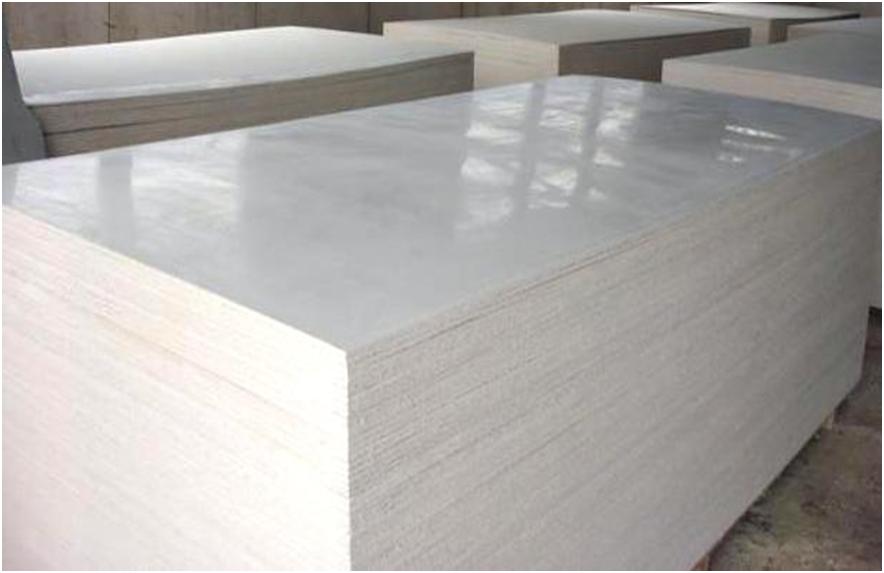
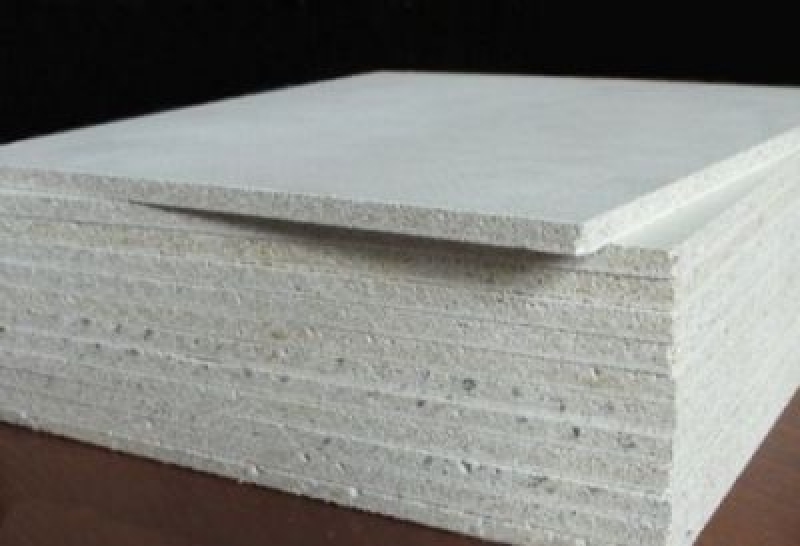
In its wide application, it is an excellent alternative to drywall. Due to its property of high moisture resistance, glass magnesium sheet, in particular, is very widely used in the arrangement of baths, swimming pools, saunas. Its slabs are much stronger than similar existing similar building materials and they can be bent with a large radius of curvature, which makes it possible to manufacture structures of almost any complexity.
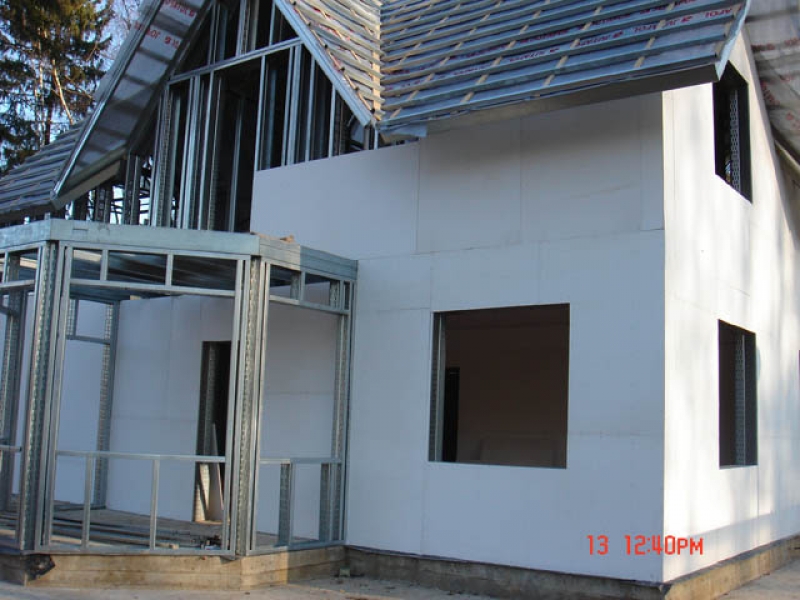
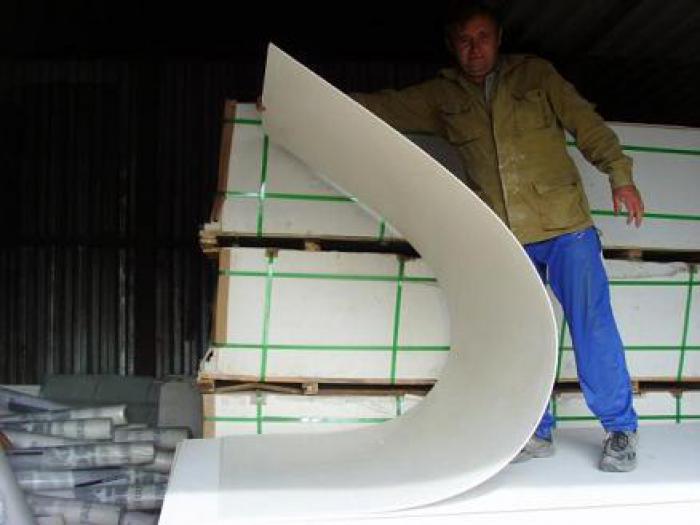
Natural finishing materials - wallpaper, varieties, differences and features.
They are distinguished primarily by the raw materials from which they are produced. Of the existing number, some are distinguished: on a paper base, wood veneer and bamboo canvases. When applied, they bring freshness to the interior space, bringing us closer to the natural environment and of course add uniqueness to the created artistic composition... Their main advantage and difference is that they take part in the process of air exchange, thus distributing humidity throughout the room and have certain qualities of sound insulation, which has great importance in today's trends in society.
advantages over other types of wallpaper.


Produced using natural fibers, dye and adhesive. Today they have gained sufficient popularity as modern building materials for decoration, due to their unique and important qualities.
![]()
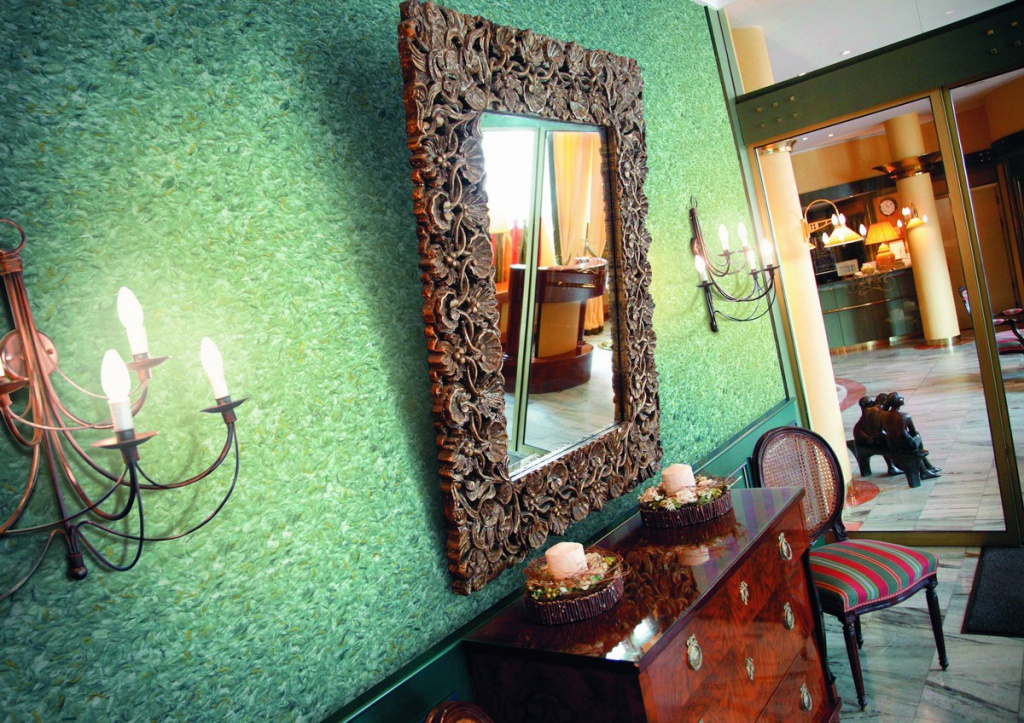
Liquid wallpaper very well hides any surface irregularities, they are environmentally friendly - they breathe due to their composition and, most importantly, have dust-repellent properties, which is especially important when used in children's rooms.
Stone wallpaper. Natural, artificial stone.


This is a thin cut of paper or vinyl backed rock for ease of use. Due to the presence in the production of gypsum, they are lightweight and are environmentally friendly... Stone wallpaper is a kind of artificial stone made for convenience in the form of tiles. Stone wallpaper due to the presence of different components that are used in production, this building material can be used both in hallways, rooms, etc., and can also be used when decorating a bathroom, a working area in the kitchen. They are also characterized by a wide range of colors, which provides a more varied use of them for different design solutions.

